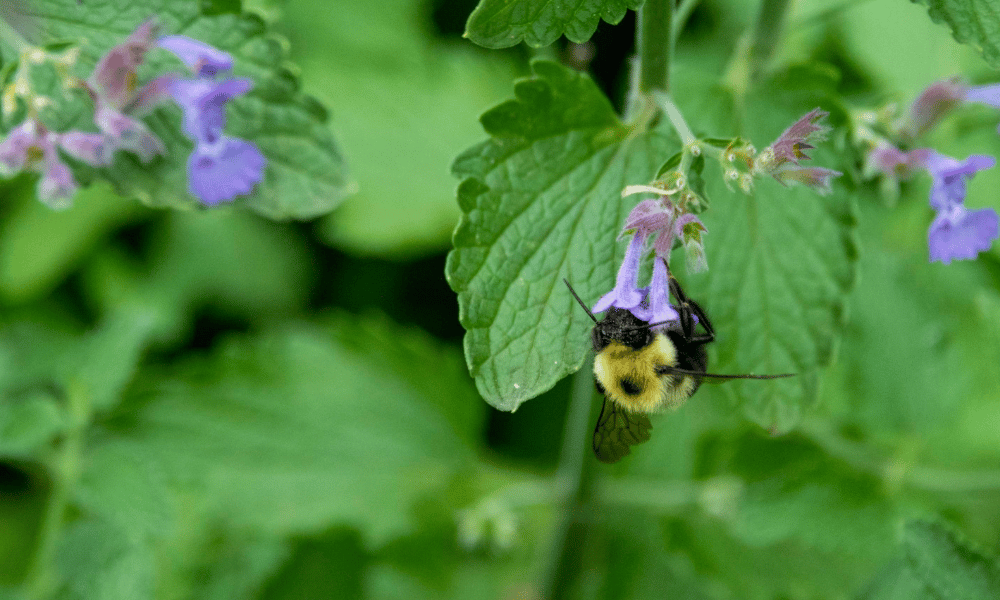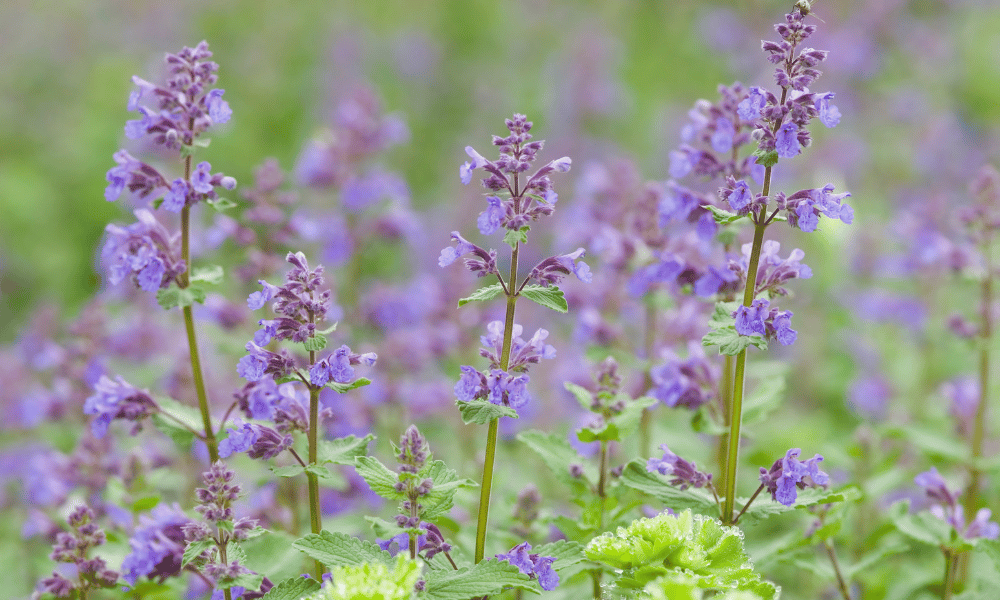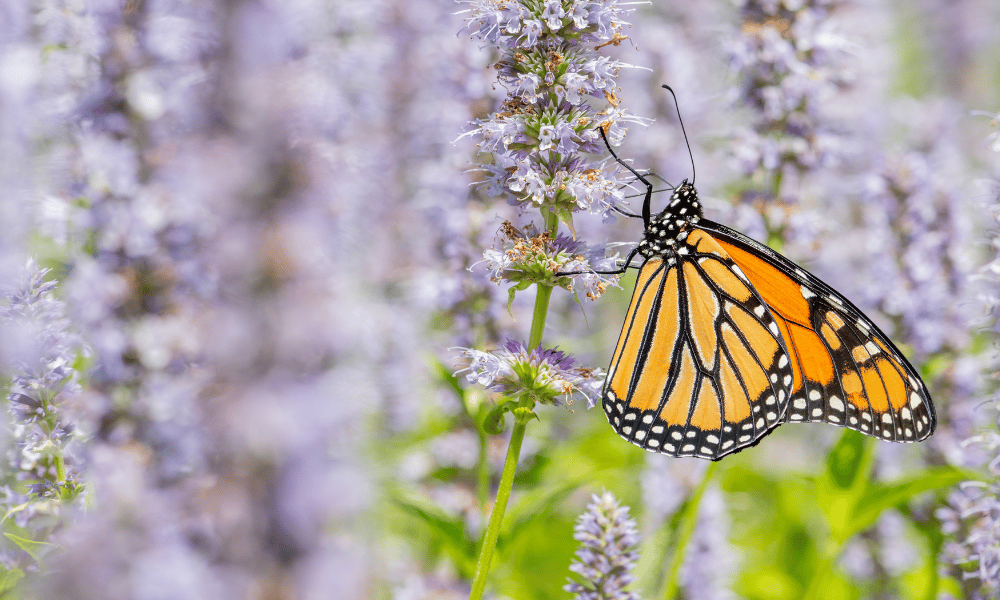Catmint is known to attract one particular animal: Cats! It’s called catmint after all. But do other living things enjoy catmint? Do butterflies like catmint, for example?
Yes, butterflies like catmint. Sorry cats, catmint is for the butterflies! This mid-spring herb blooms right after the early spring flowers like tulips and daffodils have bloomed and faded. Meaning, that these herbs flower right as the pollinators like butterflies need them most!
Catmint, also called catnip or nepeta, is a mounding perennial herb that sprouts beautiful flowers ranging in colour from white to deep purple. These herbs will quickly overtake a garden, so it is best to grow them in a pot.
The reason catmint spreads so quickly and easily is that it is an extremely hardy herb. Most varieties are drought resistant and are not too picky about soil conditions. Some catnip plants even tolerate some shade!
Catmint makes a great addition to butterfly gardens of both the experienced gardener and the novice newbie gardener.
Yes, catmint comes back year after year. This means you can buy a few plants, spread them around your garden and know that you’ll draw butterflies in for years to come.
What Else Does Catmint Attract?
With bold blooms in purple hues, catmint is also a favourite flower of honeybees, bumblebees, hoverflies, and even hummingbirds!
With long stems dotted with multiple blooms, there is plenty of nectar and pollen to go around. In fact, it is not uncommon to see multiple bees or butterflies in each bloom.
Bees and butterflies see colour differently than humans or other animals do. Both bees and butterflies have a strong attraction to plants in the purple, blue, and violet families.
Since catmint blooms anywhere from white to deep purple, almost any bloom is a honeybee or butterfly’s favourite colour!
Yes, catmint is hugely beneficial to bees who are drawn in by the colour and the bountiful supply of nectar that catmint can provide them with.

Which Varieties of Catmint Attract Butterflies?
Every single variety of Catmint attracts butterflies, so it is impossible to go wrong! However, there may be a better Catmint option for your garden based on other criteria. Below, find a small list of different catnip varieties you can grow in your garden.
- Siberian Catmint is known for its unique cinnamon smell and bold purple blooms against blue-green leaves. This plant can grow up to 4 feet tall and blooms all season long. It will die off when the winter sets in and it dies completely into the ground.
- Japanese Catmint is known for being a bit pickier than other Catmint varieties. It is a low mounding perennial that has delicate blue-purple flowers against glossy bushy green leaves.
- Yellow Catmint is a gorgeous yellow blooming variety of Catmint that is native to the Himalayas. Yellow Catmint tends to grow to about 4 feet tall on average and prefers a cooler climate and well-draining soil.
- Greek Catmint is most commonly found dotting European gardens. This variety can grow to an impressive 6 feet tall and spread over 3 feet wide, making it a fragrant and bold statement in any garden.
- Six Hills Giant Catmint is by far the most common variety and for good reason. These plants are extremely hardy and can be grown almost anywhere. They grow to about 3 feet tall, but because they have a curved nature, they appear to be about 24 inches from the ground.
- Walkers’ Low Catmint is a low-growing Catmint variety that grows to about a foot tall. These make a great addition to landscape edges and as a contrast for larger bushes and plants in your butterfly garden.

Why Do Butterflies Like Catmint?
Butterflies love catmint because of its alluring smell and bright beautiful nectar-filled flowers. Since the flowers on catmint are clustered close together, butterflies do not have to go very far to enjoy eating their fill.
Honeybees and butterflies will frequent catmint thanks to its abundance of nectar-filled flowers.
Growing other pollinator-friendly plants near catmint will increase the odds of keeping these insects in your garden longer.
Also, think of all the life cycle stages of a butterfly to keep the most butterflies in your garden. Even though adult butterflies love catmint, caterpillars eat entirely different plants. Growing milkweed is a great way to increase the Monarch population in your garden, for example as Monarch caterpillars will only eat milkweed.
As gardeners, some of us hate seeing caterpillars knowing the damage they can do but love seeing butterflies. Unfortunately, you cannot have butterflies without caterpillars so it might be time to swallow your pride and even encourage caterpillars.
Want to Attract Butterflies to Your Garden?
We’ve Put Together an Ultimate Guide to Attracting Butterflies to Your Garden Including Our Top 11 Plants You NEED to Start Growing Today:
Summary
Catmint is a hardy and fragrant herb that is quick to grow and easy to care for. It is also known for its abundance of tiny flower clusters that butterflies and bees love! Thanks to the colouring of these flowers ranging from white to deep purple, bees and butterflies both seek out catmint plants for a food source.
When you decide to grow a catmint plant in your garden, you have many options to choose from. Since butterflies and bees are attracted to all of the varieties, it is up to you which catmint plants are right for you.
Growing other pollinator plants alongside your catmint creates a butterfly and bee oasis and will encourage them to stay in your garden.







